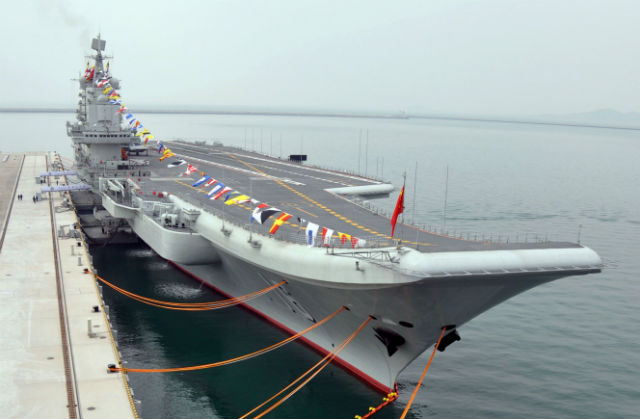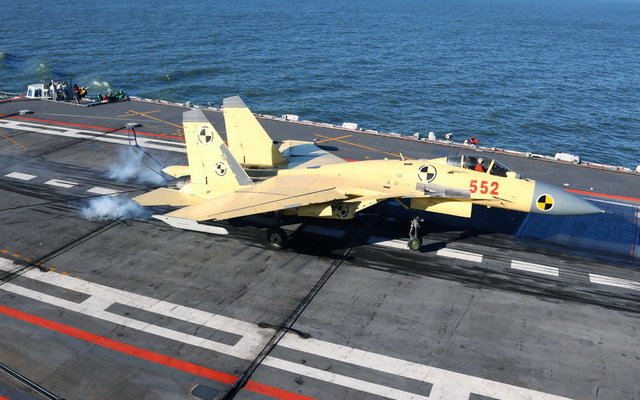China plans to build an aircraft carrier that is larger and can carry more aircraft than its current such warship, the Liaoning.
"The next aircraft carrier we need will be larger and carry more fighters," says Song Xue, deputy chief of staff of the Chinese navy. Song's remarks were carried in a report by official state news agency Xinhua and posted on the Chinese defence ministry's website. He was reportedly speaking to a gathering of foreign defence attaches.
 |
|---|
Rex Features The Liaoning, pictured alongside in Qindao military port on 19 April, 2013 |
Song says the current carrier falls directly under the command of naval headquarters, and is not assigned to any of China's three fleets. This is consistent with previous Chinese statements that the ship is not intended for operational use, but rather as a testbed for exploring carrier operations and doctrine. The Liaoning can carry up to 30 fighters, according to the official.
Beijing conducted its first carrier landings and take-offs in late 2012 using the Shenyang J-15 aircraft (below), which is all but identical to Russia's Sukhoi Su-33.
 |
|---|
Xinhua |
Significantly, Song says China's future carriers will embark not only fighters, but "reconnaissance aircraft, anti-submarine aircraft, electronic countermeasures planes, and rotary-wing aircraft". A composite air wing such as this demands a carrier with catapult assisted take-off but arrested recovery (CATOBAR) capability. The only nations that operate such warships are the USA and France.
The Liaoning is a short take-off but arrested recovery (STOBAR) carrier, which limits its air wing to fighter aircraft and helicopters. Airborne early warning and control (AEW&C) system aircraft such as the US Navy's Northrop Grumman E-2 Hawkeye and other essential support aircraft require a CATOBAR-capable ship.
In July 2012, images emerged on Chinese defence sites of what appeared to be a testbed for a possible carrier-borne AEW&C aircraft. Apparently designated JZY-01, the type is based on the Xian Y-7 transport, the Chinese version of the Antonov An-26. A rough translation of the Chinese characters on the fuselage read "demonstrator aircraft". The testbed had a large circular radar dome mounted on a single mast aft of the wing root, although it was unclear whether this was an operational radome, or a mock-up for testing aerodynamics. Its tail had been highly modified and resembled the four vertical stabiliser arrangement found on the E-2. Having four vertical stabilisers allows the E-2 to fit inside an aircraft carrier's hangar deck.
Despite his positive comments about China's naval airpower ambitions, Song dismissed media speculation that a follow-on carrier is under construction in Shanghai.
This is the second time China has scotched such reports. A day after the Liaoning's commissioning on 26 September 2012, Beijing stressed that it is still in the early stages of developing naval aviation, and that it still has "a long way to go".
Source: Flight International










































